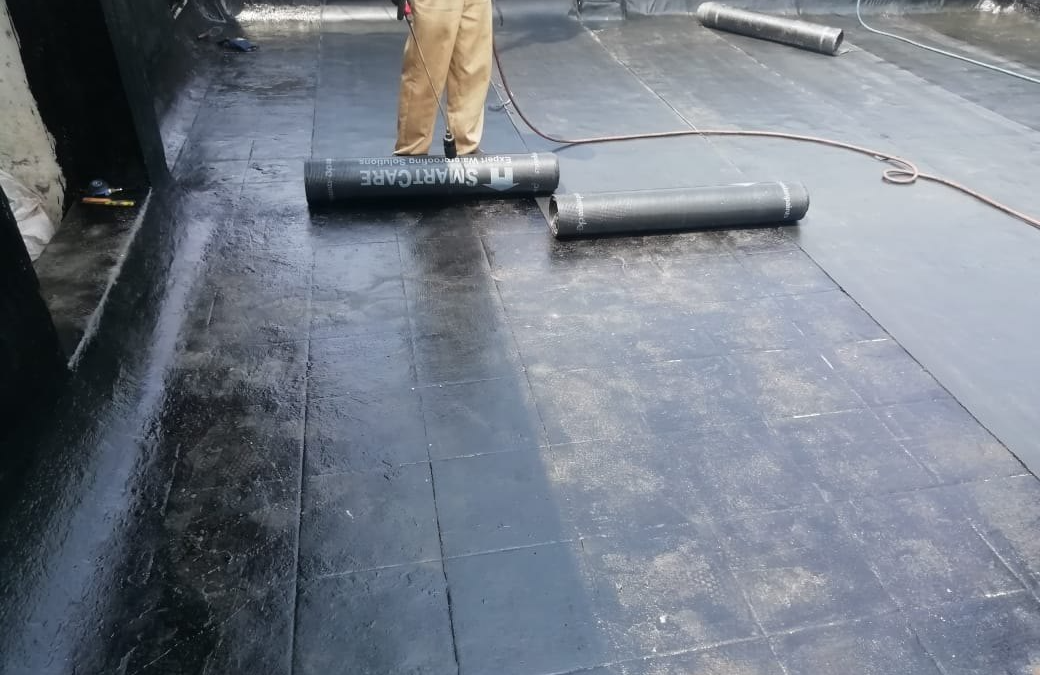Table of Contents:
1. Understanding the Importance of Façade Protection
– 1.1 Why Waterproofing Matters
2. Common Façade Vulnerabilities
– 2.1 Identifying Weak Points: Where Water Intrusion Occurs
– 2.2 Impact of Weather Extremes on Different Building Materials
3. Choosing the Right Waterproofing Solutions
– 3.1 Sealants and Membranes: An Overview
– 3.2 Evaluating Waterproofing Materials for Long-Term Durability
4. Conclusion
Introduction
Delve into the importance of waterproofing and weatherproofing as indispensable defenses for your building’s façade. Uncover practical insights in this article to fortify your property’s longevity and structural integrity against the unpredictable forces of nature.
Why Waterproofing Matters in Singapore
Tackling Torrential Rain:
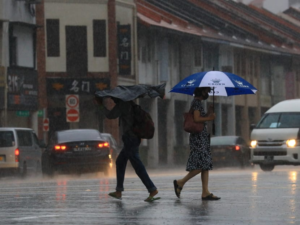
Given Singapore’s frequent heavy rainfall, particularly during the monsoon seasons, waterproofing becomes imperative. This is crucial to prevent water infiltration, which, if left unaddressed, could compromise the structural integrity of buildings.
Mitigating Humidity Impact:
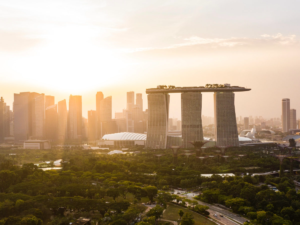
The high humidity levels in Singapore can accelerate the deterioration of building materials. Waterproofing not only keeps water out but also helps control internal moisture, reducing the risk of mould and decay.
Embracing life in Singapore involves adapting to the routine of rainy seasons. However, it can pose significant issues for your home if proper roof waterproofing is lacking. Here are several reasons why:
Structural Damage to the Roof:

Inadequate waterproofing can lead to continuous dampness and mould formation. This can weaken support beams over time, posing a risk of roof collapse in affected areas.
Unsightly Water Stains:
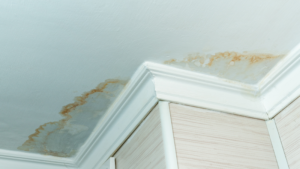
While not posing any hazards, water stains on walls and ceilings are unsightly. The removal of these stains can be challenging, significantly impacting the overall appearance of your interior.
Mould and Moss on Exterior Walls:
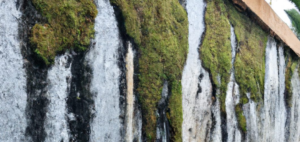
Neglecting waterproofing may result in moss and mould on your exterior walls. This diminishes the aesthetic appeal and gives your facade an unwanted “cottage in the woods” vibe, indicative of neglect. Ensuring your roof is properly waterproofed is essential in preventing these issues, safeguarding your home from structural damage and maintaining its visual appeal.
Common Façade Vulnerabilities
2.1 Identifying Weak Points: Where Water Intrusion Occurs
Window Seals and Joints:
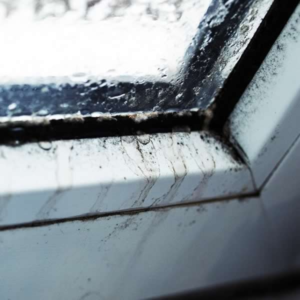
Check for gaps or deteriorating seals around windows, as these areas are prone to water penetration.
Exterior Wall Openings: Vulnerabilities such as gaps around pipes, vents, and utility penetrations should be closely examined and sealed.
Cracks in Masonry or Concrete:

Prevent potential issues by addressing small cracks promptly. Regular inspections and timely repairs are crucial for maintaining structural integrity and preventing water seepage.
Roof-to-Wall Connections: Ensure the proper sealing of joints and connections between the roof and exterior walls to prevent water entry during heavy rain or storms.
Flashing and Sealant Condition: Inspect the condition of flashing and sealants around doors, windows, and other openings, as they play a crucial role in weatherproofing.
Facade Cladding:

Conduct a comprehensive examination of cladding materials, carefully checking for any signs of deterioration or gaps that could potentially jeopardize water resistance. It’s essential to ensure the ongoing integrity of your structure through proactive assessments.
2.2 Impact of Weather Extremes on Different Building Materials
To achieve efficient façade maintenance, it is essential to have a comprehensive understanding of how various building materials respond to extreme weather conditions.
Metal Components: Metal elements in building façade, such as steel or aluminium, are susceptible to corrosion and degradation when exposed to harsh environmental conditions, hefty rain or coastal environments.
Wooden Surfaces:
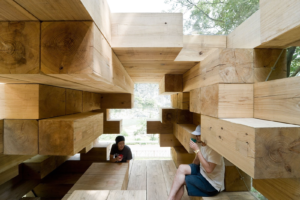
Wooden surfaces on building facades are prone to damage when exposed to prolonged moisture. To safeguard both the structural integrity and aesthetics of wood, it’s crucial to comprehend these vulnerabilities and institute appropriate protective measures. Moreover, excessive moisture creates an ideal environment for fungi to thrive, ultimately resulting in wood rot. Consequently, the compromised structure weakens, significantly impacting the wood’s load-bearing capacity and overall stability.
Concrete and Masonry: In humid environments, concrete face challenges like moisture absorption, leading to issues such as mould, mildew, algae growth, and efflorescence. Moisture reaching steel reinforcement may accelerate corrosion, posing risks to structural integrity and safety. Additionally, the alkali-silica reaction in humid conditions can induce cracking, impacting durability. Mould and mildew not only affect appearance but also contribute to surface deterioration over time.
Glass:
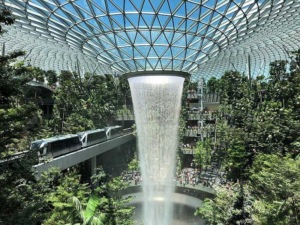
Sealant deterioration around glass panels in façade, caused by exposure to weather elements and UV radiation, compromises their ability to create a watertight seal, increasing the risk of water infiltration. This infiltration poses various risks, including interior damage, mould growth, and decreased energy efficiency, potentially compromising the building’s structural integrity. Implementing preventive measures, regular maintenance checks, and involving professionals in periodic assessments are essential to address sealant issues and ensure the long-term effectiveness of the glass façade.
Choosing the Right Waterproofing Solutions
3.1 Sealants and Membranes: An Overview 
Sealants and membranes play pivotal roles in waterproofing, serving as formidable barriers against moisture intrusion. Applied to joints and gaps, sealants prevent water seepage, while membranes offer extensive coverage, effectively safeguarding large surfaces.
3.2 Evaluating Waterproofing Materials for Long-Term Durability
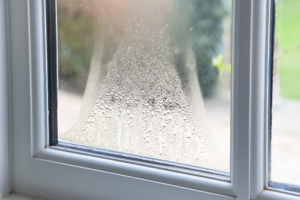
For long-lasting durability, begin by assessing the compatibility of waterproofing materials with specific surfaces such as concrete or metal. Evaluate their performance in joints prone to movement, considering their resistance to water, chemicals, and temperature fluctuations. Prioritize materials with high ratings in these aspects. Additionally, opt for UV-resistant options to combat degradation from sunlight. Ensure long-term flexibility by choosing products that adhere to industry standards and follow manufacturer guidelines for optimal performance over time.
Conclusion
Conclusively, adopting a proactive weatherproofing approach safeguards your property from structural damage, water stains, and moss growth, enhancing both aesthetics and longevity. By implementing these insights and comprehensive weatherproofing strategies, fortify your façade against nature’s unpredictable forces, ensuring enduring architectural resilience.


